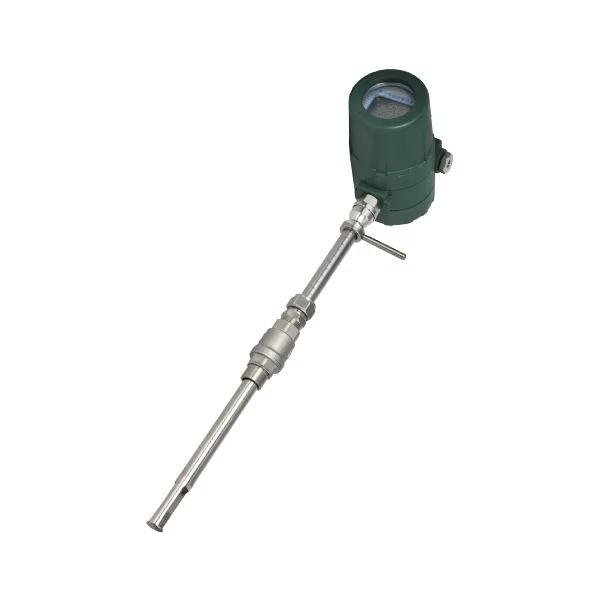Model No.︰-
Brand Name︰KCMC
Country of Origin︰China
Unit Price︰US $ 549 / pc
Minimum Order︰1 pc
A mass flow meter, also known as an inertial flow meter, is a device that measures mass flow rate of a fluid traveling through a tube. The mass flow rate is the mass of the fluid traveling past a fixed point per unit time.
The mass flow meter does not measure the volume per unit time (e.g. cubic meters per second) passing through the device; it measures the mass per unit time (e.g. kilograms per second) flowing through the device. Volumetric flow rate is the mass flow rate divided by the fluid density. If the density is constant, then the relationship is simple. If the fluid has varying density, then the relationship is not simple. For example, the density of the fluid may change with temperature, pressure, or composition. The fluid may also be a combination of phases such as a fluid with entrained bubbles. Actual density can be determined due to dependency of sound velocity on the controlled liquid concentration.
A thermal gas mass flowmeter is a type of flowmeter used to measure the mass flow rate of gases. It operates on the principle of heat transfer from a heated element to the flowing gas.
The thermal gas mass flowmeter is designed based on the principle of thermal diffusion.
The meter uses the constant temperature difference method to accurately measure the gas. It has the advantages of small size, high digitization, easy installation and accurate measurement.
The sensor part is composed of two reference level platinum resistance temperature sensors. When the instrument is working, one sensor can continuously measure the medium temperature T1; the other sensor’s temperature rises to higher than the medium temperature T2 through self-heating, it is used to sense the flow rate of the fluid, so it’s known as velocity sensor. The temperature △ T =T2-T1, T2˃T1, when there is a fluid flowing, gas molecules collide with the sensor and take away the heat of T2, which makes the temperature of T2 reduction. If to keep △ T unchanged, it is necessary to increase the supply current of T2. The faster the gas flows, the more heat will be taken away.
There is a fixed functional relationship between gas flow velocity and the incremental heat, which is the principle of constant temperature difference.
The flowmeter consists of a heated sensor element and a temperature sensor. The sensor element is heated to a constant temperature, and the gas flowing over it carries away heat. The temperature sensor measures the temperature difference between the heated element and the gas.
Based on the heat transfer principle, the flowmeter calculates the mass flow rate by measuring the power required to maintain the heated element at a constant temperature. The power required is proportional to the mass flow rate of the gas.
Application and the features of the Thermal gas mass flowmeters:
Industry HVAC systems, industrial processes, and scientific research.Feature:
1. high accuracy, wide rangeability, and low pressure drop
2. limitations in measuring certain gases with low thermal conductivity or high viscosity.
Payment Terms︰ TT




